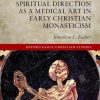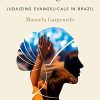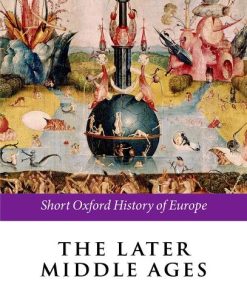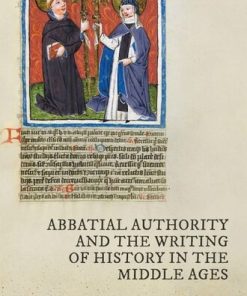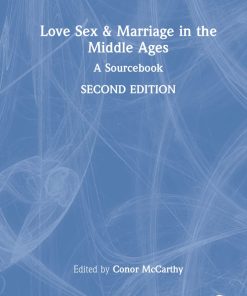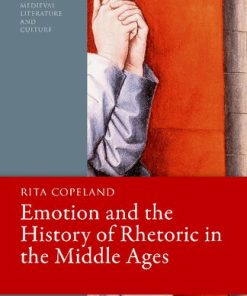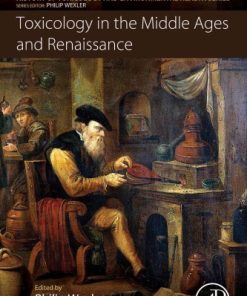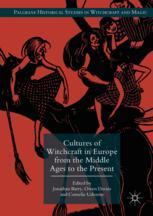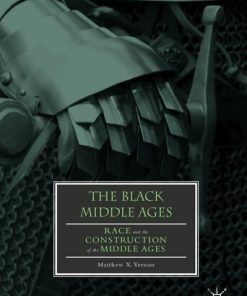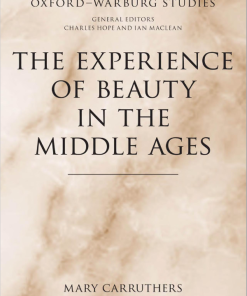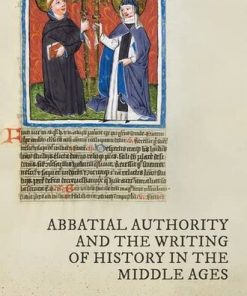Depicting Orthodoxy in the Russian Middle Ages The Novgorod Icon of Sophia, the Divine Wisdom 1st Edition by Ágnes Kriza 0192596276 9780192596277
$50.00 Original price was: $50.00.$25.00Current price is: $25.00.
Depicting Orthodoxy in the Russian Middle Ages: The Novgorod Icon of Sophia, the Divine Wisdom 1st Edition by Ágnes Kriza – Ebook PDF Instant Download/DeliveryISBN: 0192596276, 9780192596277
Full download Depicting Orthodoxy in the Russian Middle Ages: The Novgorod Icon of Sophia, the Divine Wisdom 1st Edition after payment.
![]()
Product details:
ISBN-10 : 0192596276
ISBN-13 : 9780192596277
Author : Ágnes Kriza
The image of Divine Wisdom, traditionally associated with the Sophia Cathedral in Novgorod, is an innovation of the fifteenth century. The icon represents the winged, royal, red-faced Sophia flanked by the Mother of God and John the Baptist. Although the image has a contemporaneous commentary, and although it exercised a profound influence on Russian cultural history, its meaning, together with the dating and localisation of the first appearance of the iconography, has remained an art-historical conundrum. By exploring the message, roots, function, and historical context of the creation of the first, most emblematic and enigmatic Russian allegorical iconography, Depicting Orthodoxy in the Russian Middle Ages deciphers the meaning of this icon. In contrast to previous interpretations, Kriza argues that the winged Sophia is the personification of the Orthodox Church. The Novgorod Wisdom icon represents the Church of Hagia Sophia, that is, Orthodoxy, as it was perceived in fifteenth-century Rus. Depicting Orthodoxy asserts that the icon, together with its commentary, was a visual-textual response to the Union of Florence between the Catholic and Orthodox Churches, signed in 1439 but rejected by the Russians in 1441. This interpretation is based on detailed interdisciplinary research, drawing on philology, art history, theology, and history. Kriza’s study challenges some key assumptions concerning the relevance of Church Schism of 1054, the polemics between the Greeks and the Latins about the bread of Eucharist, and the role of the Union of Florence in the history of Russian art. In particular, by studying both well- and lesser-known works of art alongside overlooked textual evidence, this volume investigates how the Christian Church and its true faith were defined and visualized in Rus and Byzantium throughout the centuries.
Depicting Orthodoxy in the Russian Middle Ages: The Novgorod Icon of Sophia, the Divine Wisdom 1st Table of Contents
Part I. Word
1. The Icon and Its Commentary
2. The Winged Bride: Quotations in the Sophia Commentary
The ‘God-seeing bird’—Ephrem the Syrian: Homily on the Beauteous Joseph
‘The fire is Divinity’—Slavonic Liturgical Commentaries
The Wedding Garments and Eschatology—The Fountain of Wisdom
3. Medieval Russian Sophiology: The Context of the Sophia Commentary in the Manuscripts
The Hagia Sophia in Constantinople
Wisdom as Orthodoxy
‘Wisdom has Christ above the head as the head is Wisdom’
Part II. Image
4. Representations of Wisdom in Rus
5. The Novgorod Sophia Icon as a Deesis
The Royal Deesis in Novgorod
Deesis, The Image of the Church
The Coronation of the Virgin and Anti-Greek Visual Polemics in the West
The Royal Deesis and Anti-Latin Visual Polemics in the East
The Sophiological Synthesis
6. Sophia in the Womb of the Virgin
Sophia Has Built Her Temple
The Theotokos Nikopoios at the Ohrid Saint Sophia Church
The Theotokos Nikopoios and Byzantine Imperial Orthodoxy
Part III. Identity
7. Slavonic Sophia Churches and the Schism of 1054
A New Byzantine Apse Decoration
The Azymes Controversy and Visualizing a New Orthodox Identity
8. Leaven and Byzantine Marian Iconography
The Marian Aspect of the Azymes Controversy
The Theotokos Blachernitissa-Znamenie as a Eucharistic Image
The Rite of the Elevation of the Panagia
9. Depicting Orthodoxy in Rus
Visualized Theology of Theosis
Anti-Latin Ecclesiology of Novgorod Icons
Part IV. History
10. Sophia, the Divine Wisdom, and the Union of Florence
Novgorod and the Union of Florence
The Apostolic Church of Divine Wisdom, Saint Sophia
11. Evfimii II, Archbishop of Novgorod
Evfimii’s Patronage
Evfimii’s Icons
12. The Hagia Sophia in Rome
Monk Efrosin and the Third Redaction of the Sophia Commentary
Sophia—‘The Mother of God, that is, virginal soul’
Sophia in Novgorod, the Third Rome
Sophia in Moscow, the Third Rome
Conclusions: Towards the Viskovatyi Affair
Appendix
Critical Edition of the Sophia Commentary with English Translation
The Content of the Sophia Commentary
The Context of the Sophia Commentary
Dating and Localization of the Sophia Commentary
The Recensions of the Sophia Commentary in the Fifteenth Century
Text N
Text K
English Translation Selected Words from Numerous Books, Questions-and-Answers and Different Passages: Sermon on Wisdom
Catalogue: The Iconography of the Novgorod Sophia in the Fifteenth and Sixteenth Centuries
Types of the Novgorod Sophia Iconography until the End of the Sixteenth Century
The History of the Novgorod Sophia Iconography until the End of the Sixteenth Century
People also search for Depicting Orthodoxy in the Russian Middle Ages: The Novgorod Icon of Sophia, the Divine Wisdom 1st:
russian orthodox description
define russian orthodox
define russian orthodox church
russian orthodox definition
russian orthodox paintings
Tags: Depicting Orthodoxy, the Russian, Middle Ages, The Novgorod Icon, Sophia, the Divine Wisdom, Ágnes Kriza
You may also like…
Politics & Philosophy - Anthropology
History - Middle Ages
History - European History
Religion & Spirituality - Spirituality
History - World History
The Black Middle Ages: Race and the Construction of the Middle Ages Matthew X. Vernon
Politics & Philosophy - Ancient & Medieval Philosophy


